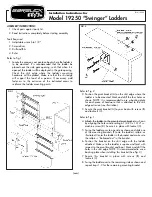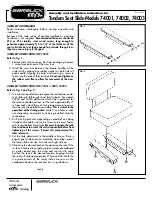
31
RNeasy Fibrous Tissue Mini Handbook 01/2018
DNA contamination
No currently available purification method can guarantee that RNA is completely free of
DNA, even when it is not visible on an agarose gel. While RNeasy Kits will remove the vast
majority of cellular DNA, trace amounts may still remain, depending on the amount and
nature of the sample.
For analysis of very low-abundance targets, any interference by residual DNA contamination
can be detected by performing real-time RT-PCR control experiments in which no reverse
transcriptase is added prior to the PCR step.
To prevent any interference by DNA in real-time RT-PCR applications, such as with
Rotor-Gene
®
and Applied Biosystems
®
instruments, we recommend designing primers that
anneal at intron splice junctions so that genomic DNA will not be amplified. QuantiNova
®
Primer Assays from QIAGEN are designed for SYBR
®
Green-based real-time RT-PCR analysis
of RNA sequences (without detection of genomic DNA) where possible (see
www.qiagen.com/GeneGlobe
). For real-time RT-PCR assays where amplification of genomic
DNA cannot be avoided, we recommend using the QuantiNova Reverse Transcription Kit
(cat. no. 205411) for reverse transcription. The kit integrates fast cDNA synthesis with rapid
removal of genomic DNA contamination.
Integrity of RNA
The integrity and size distribution of total RNA purified with RNeasy Lipid Tissue Kits can be
checked by denaturing agarose gel electrophoresis and ethidium bromide staining or by
using the QIAxcel Advanced System, Agilent Tapestation or Agilent 2100 bioanalyzer. The
respective ribosomal RNAs should appear as sharp bands or peaks. The apparent ratio of
28S rRNA to 18S rRNA should be approximately 2:1. If the ribosomal bands or peaks of a
specific sample are not sharp, but appear as a smear towards smaller sized RNAs, it is likely
that the sample suffered major degradation either before or during RNA purification.








































